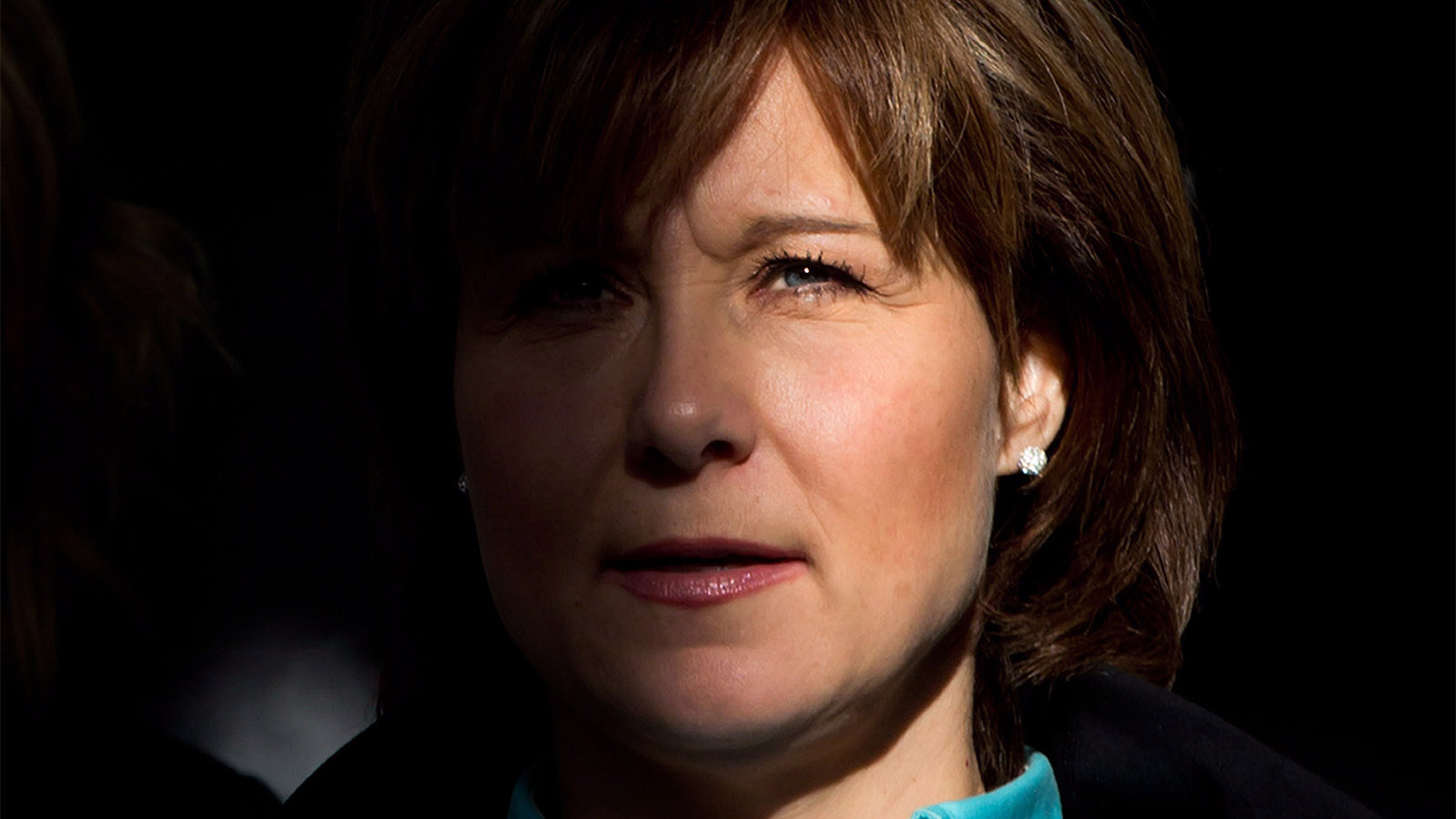The real lesson Ontario can take away from B.C.’s carbon tax
A recent study doesn’t prove revenue-neutral carbon taxes are a myth. It proves that governments have to be held accountable.
Emissions are released from a smokestack at the Teck Mining Company’s zinc and lead smelting and refining complex in Trail, B.C., on Monday November 26, 2012. (Darryl Dyck/CP)
Share

The lesson that Ontario Progressive Conservative Party leader Patrick Brown can take away from British Columbia’s carbon tax is simple, according to the Canadian Taxpayers Federation’s Christine Van Geyn. “Revenue neutrality,” she declares, “doesn’t happen.”
In her recent piece in the Financial Post, Van Geyn argues that a Fraser Institute study shows that the idea of a revenue-neutral carbon tax is impossible, and that Brown should abandon his plans to bring one to Ontario.
Problem is, the Fraser Institute study actually shows that a revenue-neutral carbon tax can work—that is, if governments are held accountable.
Both Van Geyn and the Fraser analysts agree that B.C.’s carbon tax was originally revenue-neutral, as advertised when it was brought in by Gordon Campbell in 2008. B.C. cut personal and corporate income taxes by more than the value of the carbon tax. In fact, between 2008 and 2013, the B.C. carbon tax was revenue-negative, returning $717 million more in tax reductions than was brought in.
Then, in 2013-14, the new government of Christy Clark backslid somewhat on revenue neutrality. B.C. increased its corporate income tax (CIT) rate by 1 per cent. But since the CIT cut was part of what B.C. was counting towards its revenue neutrality commitment, and the government was legally bound to make its tax plan revenue-neutral, they had to substitute other tax cuts to make up for the CIT increase. To do this, the government counted some existing tax credits toward its revenue neutral promise.
The Fraser Institute argues that these were not genuine tax reductions. But the B.C. government holds that these credits were either extended or enhanced. Assuming that Fraser is right, then between 2013 and 2017 B.C. took in $599 million more in carbon revenues than it repaid in tax reductions. To put this in perspective, B.C. still returned 87 per cent of the revenues brought in from carbon taxes as tax cuts. This is still dramatically better than Alberta, which plans on returning only about a third of revenues, or Ontario and Quebec, which plan to spend all of their carbon revenues on environmental measures.

Furthermore, the Fraser Institute study changed the B.C. government’s mind. Most observers agreed that counting pre-existing tax credits not really in keeping with B.C.’s revenue neutrality commitment. So in the recent 2017 budget, B.C. removed three of the “extended” tax credits from its calculation and made two genuinely new tax cuts—a reduction of B.C.’s small business corporate income tax rate from 2.5 per cent to 2 per cent, and a reduction of provincial sales tax on electricity for businesses. With these changes, the carbon tax is revenue-neutral going forward from 2017 even by the Fraser Institute’s rigorous standards. (B.C. also eliminated Medical Services Plan premiums, an $845 million per year tax cut, but didn’t count this in its carbon tax plan).
The Fraser Institute study doesn’t prove that carbon taxes can’t be made revenue-neutral. It proves that governments have to be held accountable. Thanks to the Fraser Institute study, the B.C. government went from an 87 per cent revenue neutral tax to a 100 per cent revenue-neutral tax again. Overall, B.C.’s carbon tax has still returned more in reduced taxes to B.C. households and businesses than it has taken in—and will do so in the future.
If groups like the Fraser Institute and the Canadian Taxpayers Federation focused more of their energy on trying to make sure that governments’ keep their tax cut promises—rather than joining the populist rejection of carbon pricing—taxpayers and businesses alike would be better off.
In a recent commentary, the Fraser Institute’s Jason Clemens and Kenneth Green say they agree with the broad consensus among economists that “a properly designed carbon tax can both reduce emissions and improve the economy,” but argue that this is difficult to do in the real world. Yet by holding B.C.’s feet to the fire with their analysis, they have helped make such a well-designed carbon tax possible. This is the real lesson that Patrick Brown and others should take from the B.C. experience.
Mark Cameron is the executive director of Canadians for Clean Prosperity.